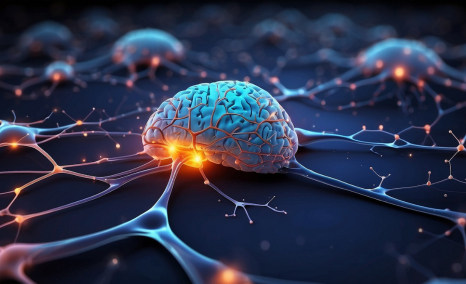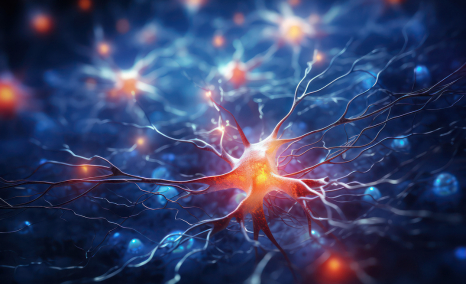Table of Contents
A Learning Disability (LD) is a neurological condition resulting from genetic and neurobiological factors, affecting the brain’s ability to executive function and process information. It prevents a person from learning a new skill, understanding complex information, hampering the ability to work independently (or executive functioning), and using the skills effectively. The learning difficulty is generally identified at an early age, however, in some cases, they may not be recognized until adulthood or at later life. As per the National Adult Literacy and Learning Disabilities Center, “ nearly 60% of adults with severe literacy problems have undetected or untreated learning disabilities”. The severity and characteristics of LD may vary from person to person. As of now, there is no cure for learning disabilities; however, early intervention and special education can help the person immensely.
Worldwide, millions of people are affected by different types of LD. As per the Learning Disabilities Association of America, “in the US, 2.3 million students are diagnosed with specific learning disabilities (SLD) and receive services under IDEA. This represents 35% of all students receiving special education services”. Similarly, as per the NHS, “nearly 1.5 million people in the UK have a learning disability. It’s thought up to 350,000 people have a severe learning disability and this figure is increasing”.
How severe can learning disabilities be?
The learning disabilities may be in oral or written language, reading, or mathematics. As per the National Institutes of Health, “75% – 80% of special education students identified as LD have their basic deficits in language and reading”. It is must mention that a learning disability is not an intellectual disability, hearing loss, vision problems, behavior, or emotional disturbance but more of learning and acquiring a skill and using it effectively
The severity of the learning disabilities may vary from person to person. In some mild cases, the person may have difficulties in one or two academic areas. In moderate cases, the person might face challenges in learning in more than two academics. In severe cases, much higher difficulties are faced by the person in several academic areas and the person requires intensive specialized teaching to overcome these.
What are the main causes of learning disabilities?
Several factors can lead to the development of a learning disability. It can be genetics or may be due to some prenatal issues or difficult birth. Apart from genetics, illnesses, or other similar conditions (such as meningitis, Autism Spectrum Disorder (ASD), or epilepsy), age, traumatic brain injuries are the major causes for learning disabilities.
What are the most common learning disabilities?
There are several types of learning disabilities; however, the most common include-
Dyslexia
Dyslexia is one of the major learning disabilities. As per The Yale Center for Dyslexia and Creativity. “Dyslexia affects 20 percent of the population and represents 80–90 percent of all those with learning disabilities. It is the most common of all neurocognitive disorders”. It is associated with acquiring and processing language. The affected person may face challenges in accurate and fluent word recognition, reading, writing, and comprehension. Due to Dyslexia, the reading becomes slow and effortful for the affected individual. As per the International Dyslexia Association, “about 85% of those students have a primary learning disability in reading and language processing”. It is often observed that people with dyslexia try to avoid activities involving reading and rely more on other modes such as pictures, video, or audio.
Dysgraphia
In Dysgraphia, the individual often found it challenging to put his thoughts on paper or on drawing. The majority of the people with dysgraphia do not know that they are affected by it. Similarly, it is more prominent in males than in females. The writing issues can include difficulties with spelling, grammar, punctuation, vocabulary, letter spacing, critical thinking, or memory. Poor handwriting and trouble in thinking & writing simultaneously can be signs of Dysgraphia.
Dyscalculia
Dyscalculia is a disability associated with mathematical calculations. The person found difficulties in learning numbers, using the mathematics symbols, facts, functions, using concepts, and reasoning. Apart from these, having difficulty in reading clock time, counting money, identifying patterns, and solving mental math are also signs of Dyscalculia.
Auditory processing disorder
Auditory processing disorder (APD) is also called Central Auditory Processing Disorder (CAPD). It is closely associated with dyslexia as around 50% of children with dyslexia also have APD. As per the Nemours Foundation, APD affects about 3%–5% of school-aged children. Similarly, APD is diagnosed twice as often in boys than in girls. In APD, the person faces issues in processing sounds, confusing the order of sounds, or being unable to filter different sounds clearly. It is observed that in APD, the brain misinterprets the information received and processed from the ear; as a result, it doesn’t correctly translate the meaning of sounds.
Nonverbal learning disabilities
As per the Understood For All, 1 in 100 children in the US may have nonverbal learning disabilities (NVLD) and also both boys and girls are equally affected by it. Nonverbal learning disabilities are categorized into three segments such as motor skills, visual-spatial organizational memory, and social abilities. In nonverbal learning disabilities, the person found it troublesome to decode nonverbal behaviors or social cues. The person may also struggle with understanding body language, facial expressions and tone of voice, poor coordination skills, and various nonverbal aspects of communication.
Visual perceptual/visual motor deficit and language processing disorder are other common learning disabilities. Apart from these, dyspraxia, autism spectrum disorder (ASD), and attention deficit hyperactivity disorder (ADHD) are also considered related disorders. These disorders also affect the learning process but are not explicitly categorized as learning disabilities.
What are the treatment options for learning disabilities?
As of now, there is no specific medication or medical treatment available to overcome the learning disability. However, several types of therapies, individualized education programs, and assistive technology tools are available to help people with learning disabilities. Similarly, some extra help or education from specialists or trained professionals may also improve reading, writing, math, communication, or other skills.
Types of therapies employed generally depend upon the kind of learning disabilities. For language disabilities, special education is usually given to the person. For people with APD issues, auditory training (or speech-language therapy) is provided that helps them to improve and develop auditory processing skills. Similarly, for poor writing problems, occupational therapy to improve motor skills is considered. Apart from these, some complementary/alternative therapy such as music, art, dance are also found to be highly beneficial.
How technology is playing a key role in managing learning disabilities?
In today’s time, several mobile/digital assistive technologies are available that can help people with learning disabilities. To overcome Dyslexia, abbreviation expanders, academic therapy, alternative keyboards, audiobooks, and usage of the text reading and word processing computer programs are available. Dysgraphia is often handled with handwriting training tools. For the treatment of APD, electronic devices such as assistive listening technology are used as frequency modulation systems that directly deliver the sound/voice into the ear. Similarly, for people with Dyscalculia, talking calculators, data (information) managers, electronic math worksheets are available that assist in math problems on a computer screen. Apart from these, freeform database software, speech synthesizers/screen readers, word-prediction programs, graphic organizers and outlining, phonetic spelling software, personal FM listening systems, optical character recognition, and several other digital assistive technologies are available for different types of learning disabilities.
Digital assistive technology is one of the most competitive segments for learning disabilities treatment; globally, several key companies are actively working to provide a wide range of digital solutions for people with different learning disabilities. Some of the key companies in the learning disabilities treatment market include Ginger Software, Oticon, Adaptive Tech Solutions, Speech Therapy Works, Youth Living Skills, Koninklijke Philips, Sight and Sound Technology, ZYGO-USA, Sonova Group, Sensory, Vocalect Biometric Solutions, and several others. As per DelveInsight, the learning disabilities treatment market is expected to grow in the coming years due to factors such as the increasing prevalence, raising awareness, increasing demand for special education, early diagnosis, technological advancement in product development, among others.
What lies ahead
Learning disability is a lifelong condition. People with learning disabilities can manage to live their life successfully. Early awareness, detection, and intervention are the key factors to managing them. If identified at an early stage, intervention can be more successful, and also, the person need not go through extended problems or face low self-esteem in later life. Governments worldwide are also focussing on the people suffering from learning disabilities, and several international organizations & NGOs have also taken initiatives to assist people with learning disabilities. As people are getting more and more aware of learning disabilities, the stigma, negative attitudes, and behaviors of society are also changing and giving a new perspective and approach towards people with these disabilities.
People with learning disabilities may face challenges in career development, growth, or in relationships, however, today we have several people with learning disabilities successful in various fields and occupations. It is expected that the rising awareness, initiatives by the government, and the development in assistive technological products will lead to better results in treatments and outcomes for people with learning disabilities in the coming years.









-Agonist.png)


